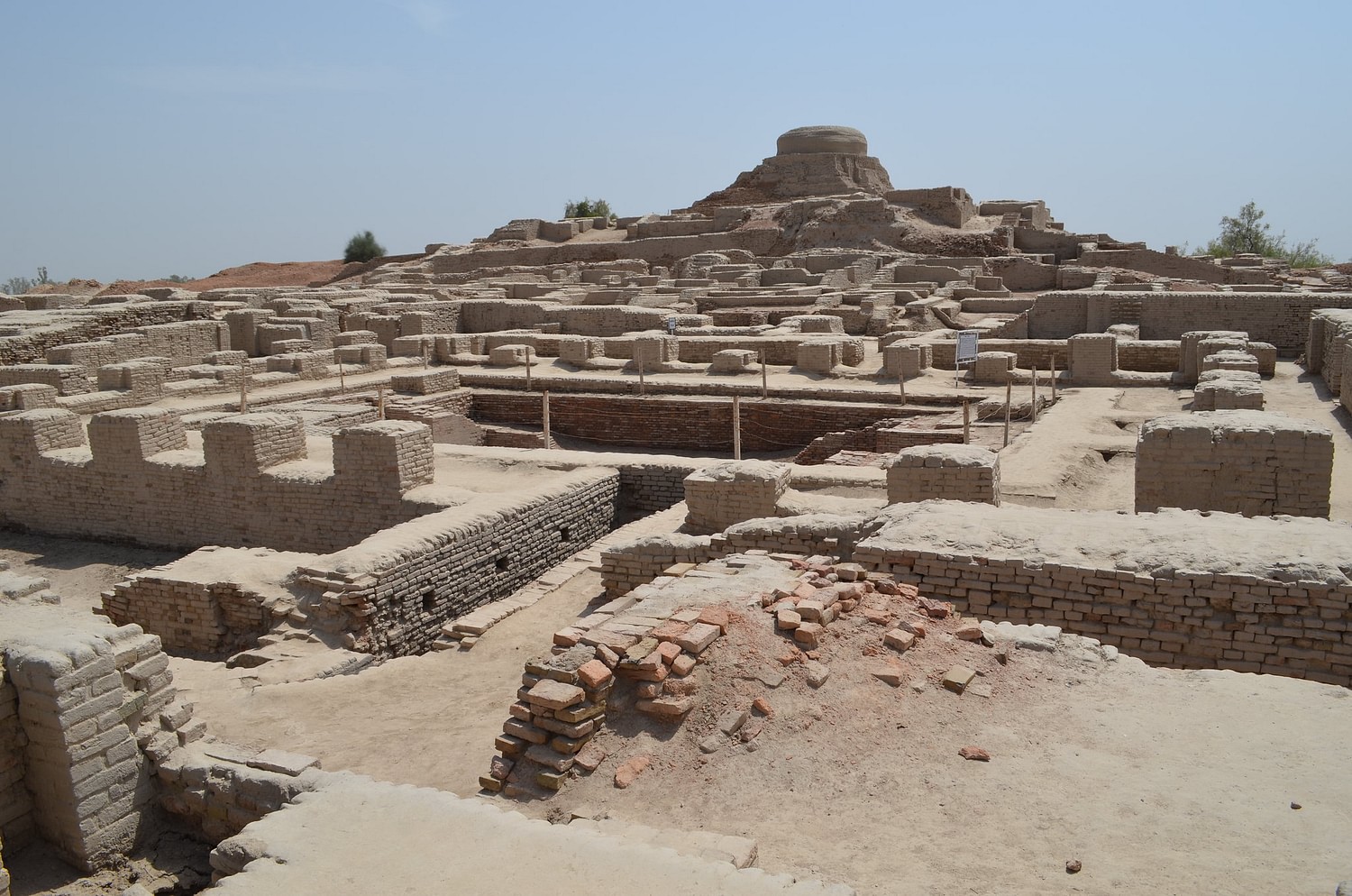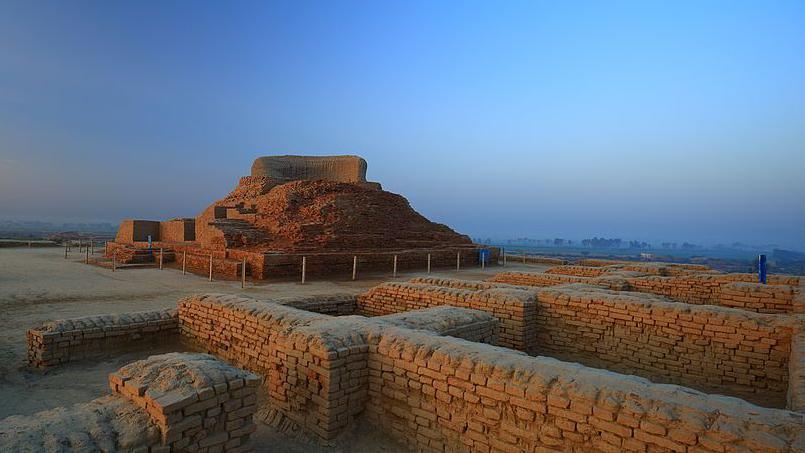Revive the Spirit of Indus Valley Civilization: India to Egypt and Jordan Tours

Introduction
Overview of Indus Valley Civilisation
The Indus Valley Civilisation, one of the world's earliest urban societies, flourished around 2500 BCE in what is now modern-day Pakistan and northwest India. This remarkable culture showcased sophisticated city planning, advanced drainage systems, and impressive architecture, such as the Great Bath of Mohenjo-Daro and the granaries of Harappa. Their ability to forge trade relationships, engage in agriculture, and develop a script that remains largely undeciphered is nothing short of fascinating.
Key Characteristics of the Indus Valley Civilisation:
- Urban Planning: Cities built on grids with advanced sewage systems.
- Trade Networks: Evidence of long-distance trade with Mesopotamia, enhancing cultural exchanges.
- Arts and Crafts: Beautiful pottery, intricate jewellery, and seals adorned with carvings depict their artistic flair.
Significance of India to Egypt and Jordan Tours
When considering a historical tour through Egypt and Jordan, the influence of the Indus Valley Civilisation cannot be overlooked. This ancient society shared complex trade routes that linked it to regions far beyond its immediate vicinity, including the ancient Egyptians and the people of the Levant.
- Cultural Exchange: Artefacts found in Egypt linked to the Indus Valley suggest lively interaction and influence.
- Shared Heritage: The architectural prowess seen in Egypt, such as the pyramids, echoes the engineering skills observed in the Indus Valley.
As you explore these majestic regions, be prepared to trace the intertwined histories that span across continents. An encounter with the remnants of the Indus Valley will provide a deeper understanding of how cultures evolved through significant exchanges that transcend time and geography. This fascinating journey awaits you!

Indus Valley Civilisation: An Ancient Encounter
Historical Background of Indus Valley Civilisation
Delving deeper into the history of the Indus Valley Civilisation reveals a narrative that is both intricate and captivating. Emerging around 3300 BCE, this ancient society was primarily located in the fertile plains of the Indus River, which provided the agricultural backbone for its thriving cities. Contrary to many contemporary civilisations, the Indus Valley people are notable for their lack of clear evidence of centralised monarchy or warfare.
Key Historical Highlights:
- Urban Flourishment: Cities like Harappa and Mohenjo-Daro served as economic and cultural hubs.
- Economy and Trade: The economy was rooted in agriculture, handicrafts, and extensive trade routes that linked to Mesopotamia, showcasing their prowess in both craft and commerce.
- Mysterious Decline: The reasons for the decline around 1900 BCE remain speculative, prompting various theories from climate change to shifting rivers.
Architectural Marvels of the Indus Valley
The architectural feats of the Indus Valley are a testament to their advanced capabilities and organisational skills. The meticulously planned cities featured impressive structures that still awe historians and archaeologists today.
Some remarkable architectural features include:
- Grid Planning: Cities were laid out in exact grids, with streets intersecting at right angles, demonstrating intelligent urban planning.
- Drainage Systems: Ingeniously designed drainage systems indicate a high level of engineering; waste was effectively channelled away, highlighting their focus on cleanliness.
- The Great Bath: Found in Mohenjo-Daro, this large public bathing area is believed to have held spiritual and social significance, reflecting the value placed on communal activities.
Exploring these marvels not only transports you back in time but also offers valuable insights into how the Indus Valley Civilisation laid the groundwork for future urban developments across the globe. Embrace the journey through these ancient cities, where every corner tells a story of innovation and culture!

India: Tracing the Roots
Cultural Influences from the Indus Valley Civilisation
As we trace the roots of India’s rich cultural tapestry, the profound influences of the Indus Valley Civilisation emerge prominently. This ancient society laid the groundwork for many aspects of Indian culture and practice that continue to resonate today.
Influential Elements of Culture Include:
- Art and Craftsmanship: The intricate pottery, beadwork, and sculptures from the Indus Valley set the tone for artistic expression in later Indian cultures.
- Urbanisation and Society: The concepts of civic planning, sanitation, and communal living that originated during this period have been integral to Indian societal structures ever since.
- Religious Practices: Early indications of ritual bathing and possibly early forms of worship can be traced back to this period, influencing contemporary Hindu practices.
Must-Visit Sites in India for History Enthusiasts
For those eager to immerse themselves in the remnants of this ancient civilisation, India is home to several must-visit sites that echo the legacy of the Indus Valley.
Key Historical Sites to Explore:
- Mohenjo-Daro: Recognised as a UNESCO World Heritage Site, this city boasts the Great Bath and offers a glimpse into the advanced urban planning of the time.
- Harappa: Another UNESCO site, Harappa invites visitors to explore its well-preserved ruins and ancient artefacts housed in the local museum.
- Dholavira: Often less crowded, this site features impressive water conservation systems and monumental architecture that showcase the ingenuity of the Indus people.
In visiting these historical sites, you step into a narrative woven through millennia, allowing you to appreciate the echoes of the past in the vibrant fabric of contemporary India. Each location tells a story—a compelling reminder of how deeply rooted our shared heritage is.
Egypt: Unveiling Ancient Wonders
Connection to the Indus Valley Civilisation
As we journey from the roots of India to the sands of Egypt, you’ll discover fascinating threads that connect these ancient civilisations. The connection between the Indus Valley Civilisation and ancient Egypt is both intriguing and complex, tracing back through trade networks and cultural exchanges that spanned continents.
Key Connections Include:
- Trade Relations: Archaeological evidence suggests that trade between the Indus Valley and Egypt occurred as early as 3000 BCE. Goods such as semi-precious stones, textiles, and metalwork flowed between these two cultures, indicating a rich exchange of resources and ideas.
- Shared Innovations: Both civilisations showcased remarkable advancements in urban planning and architecture. The monumental structures of Egypt echo the sophisticated design seen in Indus cities, highlighting a shared appreciation for grandeur and functionality.
Exploring Egyptian Pyramids and Temples
Once you’ve appreciated these connections, it’s time to explore the wonders of Egypt—primarily its stunning pyramids and temples, which stand as testaments to the ingenuity and ambition of its people.
Must-See Egyptian Highlights:
- The Great Pyramid of Giza: As one of the Seven Wonders of the Ancient World, this iconic structure is a must-visit. Standing tall for thousands of years, it showcases the Pharaohs’ power and the advanced engineering techniques of the time.
- Karnak Temple: Immerse yourself in the grandeur of the Karnak Temple Complex, where massive columns and intricate hieroglyphics tell stories of gods and kings, reflecting the deeply rooted spirituality of the Egyptians.
- Luxor Temple: Known for its impressive statues and beautiful carvings, Luxor Temple offers a tranquil atmosphere to explore the religious practices that shaped ancient Egyptian life.
As you wander through these iconic landmarks, let the echoes of ancient voices guide you, revealing the fascinating narratives woven through history. The experience offers a profound connection not just to Egypt but to the broader tapestry of human achievement.
Jordan: Bridging Continents
Historical Ties to Indus Valley Civilisation
As we continue our exploration, we find ourselves in Jordan, a nation that stands at the crossroads of several ancient civilisations, including crucial connections to the Indus Valley. The historical ties between these regions, while not always evident, have played a significant role in the development of culture and trade across the ages.
Notable Historical Links:
- Trade Routes: Jordan was pivotal in ancient trade networks, linking the Indus Valley with the Levant, Egypt, and beyond. This exchange facilitated the movement of goods such as spices, textiles, and precious metals, enriching both cultures.
- Cultural Syncretism: Archaeological findings indicate that the flow of ideas regarding arts, religion, and governance between the Indus Valley and Jordan contributed to the bustling trade hubs in cities like Petra, enhancing their cultural richness.
Journey through Petra and Jerash
Now, let’s step into the realm of Jordan’s remarkable heritage by journeying through two of its most enchanting sites: Petra and Jerash. Both destinations offer a window into the architectural brilliance and historical significance of the region.
Highlights of Your Journey:
- Petra: Often referred to as the "Rose City," Petra is famed for its stunning rock-cut architecture and vibrant history. As you enter through the narrow Siq, the grand facade of the Treasury (Al-Khazneh) emerges, leaving you awestruck. This UNESCO World Heritage Site served as a major trading hub and demonstrates the ingenuity of the Nabataeans.
- Jerash: Just a short drive from Amman, Jerash is one of the best-preserved Greco-Roman cities in the world. Its impressive colonnades, amphitheatres, and temples tell tales of life during the Roman Empire. Walking through the ancient streets feels like stepping back in time, allowing you to connect with the rich past of this vibrant city.
As you explore these monumental sites, the intricacies of history come alive, illustrating how the Legacies of ancient civilisations, including the Indus Valley and Jordan, continue to shape our understanding of the world. Each step taken through Petra and Jerash helps bridge continents and cultures in a unique and meaningful way.
Cultural Exchange: Bonds Beyond Borders
Shared Traditions between India, Egypt, and Jordan
As we explore the deep connections between these remarkable civilisations, it becomes evident that the threads of cultural exchange have woven a rich tapestry that spans continents. India, Egypt, and Jordan, despite their geographic distances, share a multitude of traditions that have transcended time and borders.
Notable Shared Traditions Include:
- Architecture: The intricate designs and engineering marvels seen in ancient structures from the Indus Valley to the Pyramids of Egypt resonate with similar principles of aesthetics and function. The geometric patterns and ornamentation can be traced through time, influencing structures across these regions.
- Agricultural Practices: The agricultural techniques developed during the Indus Valley era, such as irrigation and crop cultivation, have parallels in both Egyptian and Levantine farming practices. These ancient societies shared knowledge that helped sustain their populations.
- Religious Rituals: Spiritual practices often intertwined, with signs of early worship and communal rituals evident in both Indus Valley sites and those of Egypt and Jordan, showcasing a shared reverence for the divine.
Impact of Indus Valley Civilisation on Modern Societies
The legacies of the Indus Valley Civilisation extend far beyond its ancient boundaries, influencing modern societies in various ways. As we continue to unearth evidence of their practices and innovations, we can see how these contributions remain relevant today.
Key Areas of Impact:
- Urban Planning: The Indus Valley's sophisticated city layouts and public amenities have inspired modern urban planners worldwide to consider sustainability and community in city design.
- Water Management: Innovative techniques for water conservation and sanitation initiated during this era have become foundational principles in contemporary environmental practices.
- Cultural Identity: The rich history and achievements of the Indus Valley contribute to the cultural identity of South Asia, inspiring pride and continuity among its descendants.
As we reflect on these shared traditions and impacts, it becomes clear that the echoes of the past profoundly influence our present and future. By acknowledging and celebrating these connections, we foster a deeper appreciation for our shared human experience, bridging cultures in a landscape marked by historical unity and diversity.
Planning Your Indus Valley Civilisation Tour
Tips for a Memorable Trip
As you gear up for your journey to the heart of the Indus Valley Civilisation, careful planning can make all the difference between a good trip and an extraordinary experience. Here are some handy tips to help maximise your exploration:
- Research Ahead: Understanding the historical significance of sites like Harappa and Mohenjo-Daro will enrich your experience. Consider reading books or watching documentaries about the Indus Valley before your visit.
- Local Guides: Hiring a knowledgeable local guide can provide deeper insights into the culture and history that you may otherwise miss. They can navigate you through fascinating anecdotes and lesser-known details.
- Stay Hydrated: Exploring ancient ruins can be tiring, especially in a warm climate. Always carry water and stay hydrated during your adventures.
- Dress Comfortably: Suitable attire can enhance your experience. Lightweight clothing paired with sturdy walking shoes will keep you comfortable as you traverse these historical sites.
Tour Packages and Itinerary Suggestions
To make your journey even smoother, numerous tour packages exist that cater specifically to exploring the Indus Valley. Here are some popular options:
- Heritage Tours: These typically span 7 to 10 days, focusing on major archaeological sites like Harappa, Mohenjo-Daro, and the lesser-known Dholavira.
- Cultural Immersion Packages: These tours often include interactions with local communities, offering an immersive experience into traditional crafts and cooking classes rooted in Indus Valley heritage.
- Combined Tours with Neighbouring Regions: If you wish to extend your adventure, look for packages that include nearby historical sites in India, such as the Taj Mahal or Ajanta Caves, to blend the ancient with the iconic.
Whatever itinerary you choose, take time to reflect upon how these ancient civilisations shaped the present. Each step in the Indus Valley is a chance to connect with history in a profound and meaningful way, creating memories that last a lifetime.
Conclusion
Appreciating the Legacy of the Indus Valley Civilisation
As we come to the end of our exploration, it’s vital to take a moment to appreciate the profound legacy left by the Indus Valley Civilisation. This ancient society not only pioneered advancements in urban planning, trade, and craftsmanship but also fostered deep cultural ties that continue to resonate today. Reflecting on its achievements offers us valuable lessons on sustainability, innovation, and community spirit.
Key Takeaways:
- Urban Innovation: Modern city planning draws inspiration from the meticulous designs of Indus cities.
- Cultural Exchange: The connections established through trade and shared knowledge illustrate the importance of collaboration across borders.
- Legacy of Craftsmanship: The artistic expressions and techniques of the Indus Valley remain influential, echoing through various cultures in artistic practices today.
Inspiring Travellers to Explore India, Egypt, and Jordan
The journey through the Indus Valley leads us to broaden our horizons further into the lands of India, Egypt, and Jordan, where each destination bears witness to historical narratives that interconnect beautifully.
- Rich Cultural Experiences: By exploring these regions, travellers can dip into a vibrant tapestry of heritage filled with artistic expression, culinary delights, and ancient traditions.
- Historical Insights: Each site tells a unique story, inviting you to walk the paths of those who came before us, leaving a lasting sense of awe.
- Shared Humanity: Ultimately, by venturing into these historical landscapes, you’ll find more than just archaeological wonders; rather, you’ll discover the shared bonds of our humanity that transcend time and geography.
So whether you’re hiking through the ruins of Mohenjo-Daro, marvelling at the Great Pyramids, or exploring the timeless city of Petra, embrace the journey. Engage with the past, cherish the present, and let the stories of these ancient civilisations inspire your travels. The world is waiting for your footsteps to weave new experiences into the rich fabric of history!
